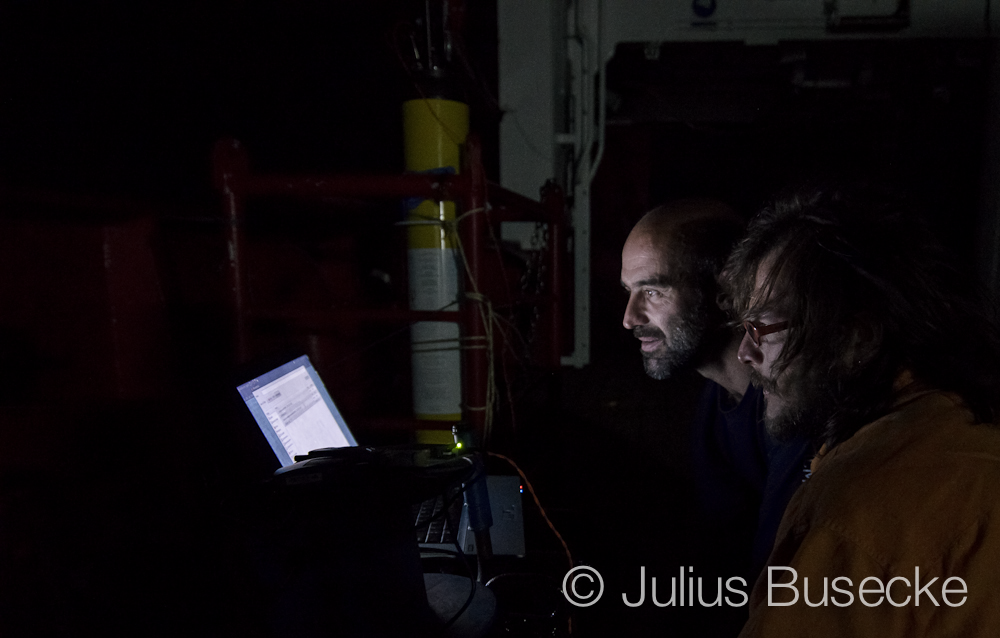SPURS used a number of free-drifting platforms that carried instruments to measure salinity, temperature, density, and the velocity of ocean currents.
After deployment, some of these platforms drifted along at the surface, while others adjusted their buoyancy to move up and down the water column.
All moved about at the mercy of the currents.
Featured Video: Communicating With Floats
Jesse Anderson discusses how researchers are able to remotely modify the sampling strategies of ARGO floats
(view transcript).
Types of Free-Drifting Platforms
Lagrangian Drifter
What does it do? A
Lagrangian drifter measures radiation, conductivity, and temperature in deep (50-100m) and shallow (upper 10m) water. They can also be programmed to stay within a certain body of water to measure vertical turbulence and energy fluxes.
How does it work? Like the Argo floats, a Lagrangian drifter modifies its buoyancy to collect vertical measurements. Extra drogues allow it to drift freely in the ocean, thereby collecting data in the horizontal direction as well. (A drogue is a device on a drifter that acts like an underwater sail. When pushed by an ocean current, the drogue helps a drifter move with the flow of water. Without a drogue, drifters become subject to wind and wave action.)
Surface Drifter
What does it do? Surface drifters measure salinity, temperature, air pressure, wind speed, and direction, and track currents at depths up to 100m. In SPURS, they are being used to track large scale ocean currents and eddy fields.
How does it work? Each drifter is made up of three parts: the drogue, the surface float, and a connecting tether. A GPS tracking unit and the scientific instruments are be found in the float, which remains at the surface. The connecting tether or line connects the float to the drogue. The drogue hangs down from the tether and creates drag in order to anchor the drifter to the desired parcel of water to be measured. The deeper the water to be measured, the longer the drogue.
Profiling Float
What does it do? Profiling floats continuously measure the temperature, salinity, and velocity of currents in the upper ocean. These floats form part of the
Argo global program, an international collaborative of 3,000 free-drifting profiling floats that measure the upper 2000m of the ocean. Twenty six floats will be deployed during SPURS, each containing two CTD sensors for high-resolution readings and novel acoustic sensors for measuring rainfall and surface wind.
How does it work? Profiling floats are battery-powered autonomous vehicles that modify their buoyancy to move vertically through the water column. Once deployed to a target depth, the drifting float will adjust its bouyancy to ascend, taking measurements along the way. At 10-day intervals, the float rises to the surface to transmit its data to a satellite before beginning the process again.
